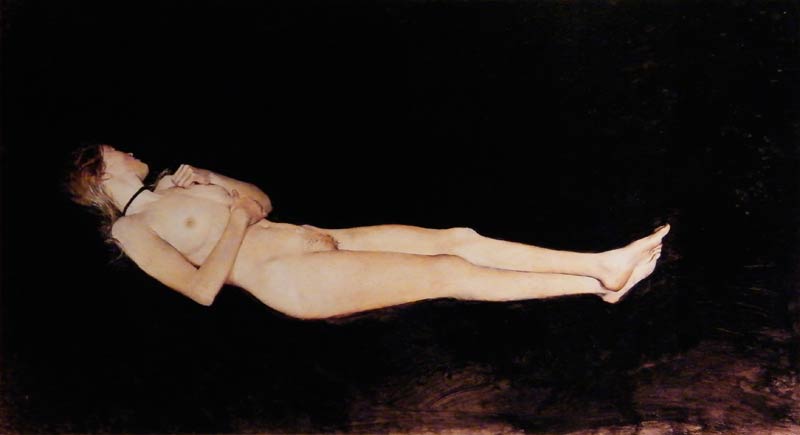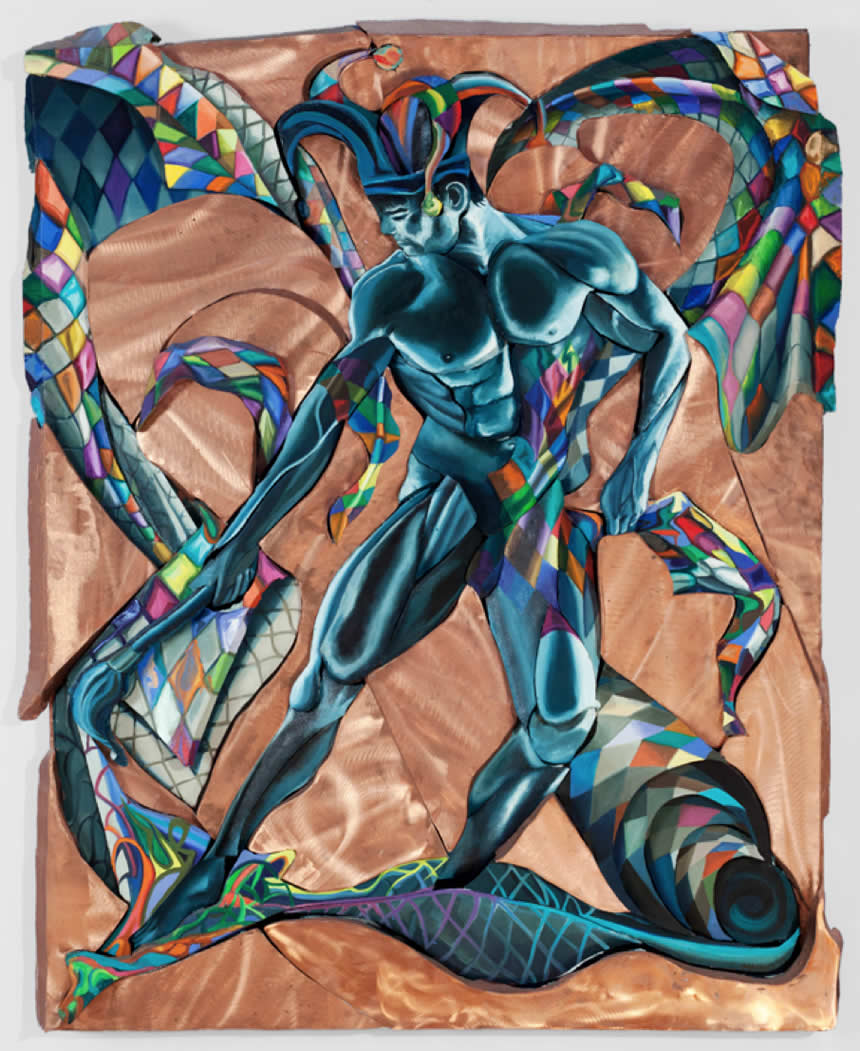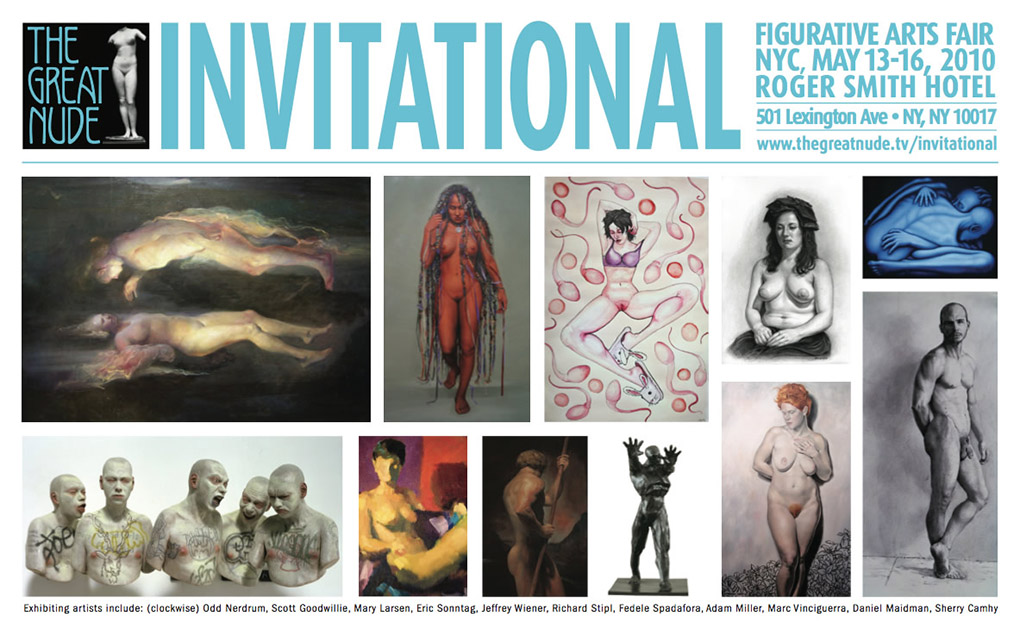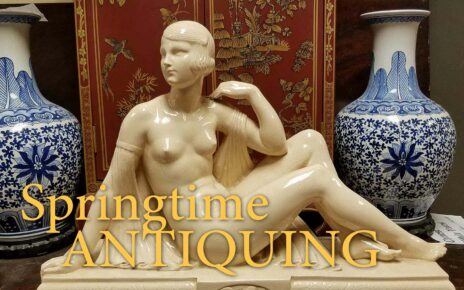Andrew Wyeth was a controversial icon; art lovers saw him as either a leader of American Realism or as an anachronism that Modernism must reject. I consider him one of the great contributors to the nude figure in Western Art, as he certainly produced several of the 20th Century’s Great Nudes.
Andrew Wyeth was the son of the successful American artist and illustrator N.C. Wyeth. Talented and well-trained under the shadow of his famous father, Andrew was also well-versed in art history, all of which gave him the means to build a successful career as a painter early in life. By the time he had found his own artistic direction as a young man, Modernism and Abstraction were in full bloom. Wyeth chose a more traditional route as a painter of stark, almost abstract landscapes.
While initially being concerned with the recording of the American landscape, Wyeth’s most famous painting by far is Christina’s World – one of American art’s most iconic images. The subject of the painting was Christina Olson, a severely handicapped neighbor whom had posed for several other Wyeth paintings. She was a proud, reclusive woman who, rather than using a wheelchair, would drag herself across the barren hillsides surrounding the Wyeth’s home in rural Pennsylvania. Her death in 1968 affected the artist deeply and seems to mark a turning point for Andrew Wyeth’s artistic career.
Turning from his landscapes to the figure, Wyeth chose to focus on the youth and natural beauty of young girl named Siri who lived near the Wyeth’s second home in rural Maine. With her parents’ permission, Wyeth began painting Siri semi-nude as she was going through puberty, and eventually began painting her completely nude at the age of fourteen.
While it was certainly a provocative choice of subject matter in a conservative, less permissive era, Wyeth’s insistence on recording youth and beauty was in line with traditions in art history. Wyeth said that painting Siri symbolized a rebirth of something fresh out of death. The paintings of Siri are somber in that context, barren, like the landscapes haunted by his memories of Christina perhaps.
In 1971, Wyeth, who was regularly producing and selling figurative works featuring several local models, began painting a series of works of one particular model that he kept hidden from everyone around him for 15 years. The works, 240 in all, included pencil drawings, quick studies and washes, and 9 beautifully finished master works in egg tempera of a blonde woman through several stages of her life. Wyeth offered the entire collection of works to a wealthy art investor 15 years later, which then became a Block-buster Art event when it toured the major museums as The Helga Pictures.
Helga, a neighbor of German ancestry and married mother of four, posed for Wyeth in some of his starker landscapes featuring the Pennsylvania countryside around his home. With her nude torso he creates a bright flash of humanity inside of his austere, brown fields. Helga, often lying nude in bed, is seen smiling serenely. Sometimes she’s seated, staring off into space, lost in thought.
One of the first great nudes produced in this series is entitled ‘Black Velvet’ (1972), with it’s obvious nod to Manet’s Olympia. Helga, pale and blissfully lying on her back with her hands folded on her belly, is a vulnerable angel of natural beauty. Her neckband – a scumble of black paint – her only cover. Helga’s face is turned away, her skin a luminous white, the entire canvas quiet and serene. Wyeth talked about his love of Rembrandts’ use of light and how his people turn toward it, caught in a frozen moment – of time holding it’s breath.
As a disciplined realist, Wyeth scrutinized the figure in much the same way as everything else, unflinchingly. In his best works you can almost feel every hair, pore and freckle, rendered in a dry-brush technique he called weaving. Essentially “weaving layers of drybrush over and within the broad washes of watercolor. An early influence on this technical methodology was Albrecht Durer’s painting called “The Young Hare, an astonishing work of craftsmanship, which when viewed alongside his work reveals the context of it’s impact on Wyeth. It’s worth noting that for all the eyebrow-raising his Siri paintings caused, Siri herself described modeling for Wyeth as quite unimpressive, telling the inquisitive art press that, “He looked at me as if he were studying a tree.”
In all of his works, Wyeth remains a realist. Helga’s youth and beauty are honestly portrayed. And we can observe both time and children take their toll on this woman’s body. But Wyeth paints what he sees, and portrays her inner strength and her sexual energy throughout the entire series. Nonetheless, in the span of the works we see time passing, and the very real press of mortality weighs heavy in some of the works.
In a work called “Lovers” (1981), Wyeth has Helga turning away from an intense light coming through the window. She is alone except for an old leaf falling toward her. If the season were Fall, this would make sense, one look out the window however reveals a late summer landscape. Wyeth was not usually given to using visual metaphor, yet this piece in particular seems to call out for a not so subconscious narrative. Perhaps it was drawing close to the end of their relationship, or maybe he wanted to communicate something that he knew was unobtainable. Regardless, there is once again an underlying melancholy appearing in Wyeth’s work.
Much can be said of the Helga Pictures in terms of their impact on the culture that Wyeth lived in. The works were honest, intimate, and even scandalous to the art world and it’s press. Wyeth’s decision to hide the works from his wife/business partner and his gallery for so many years only added fuel to the fire. But Wyeth’s decision to hide the works, and in effect keep them together, created one of the largest, most complex Life Studies of a single model in art history. While Wyeth was already famous for his contributions to American Realism, with the Helga Pictures, Wyeth was making a very large contribution to the body of Figurative Art.














WOW